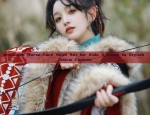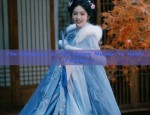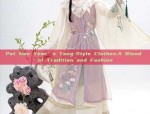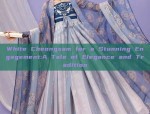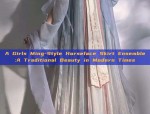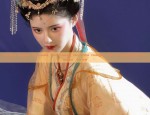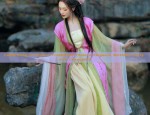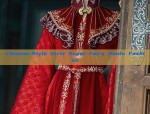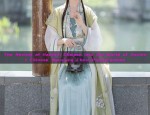The Mamen Dress:A Journey into the Symbolic World of Traditional Chinese Clothing
In the tapestry of Chinese cultural heritage, the mamen dress, also known as the horseface skirt, stands out as a vibrant testament to the rich history and craftsmanship of traditional clothing. This article delves into the fascinating world of the mamen dress, exploring its origins, evolution, and the significance it holds in modern times.
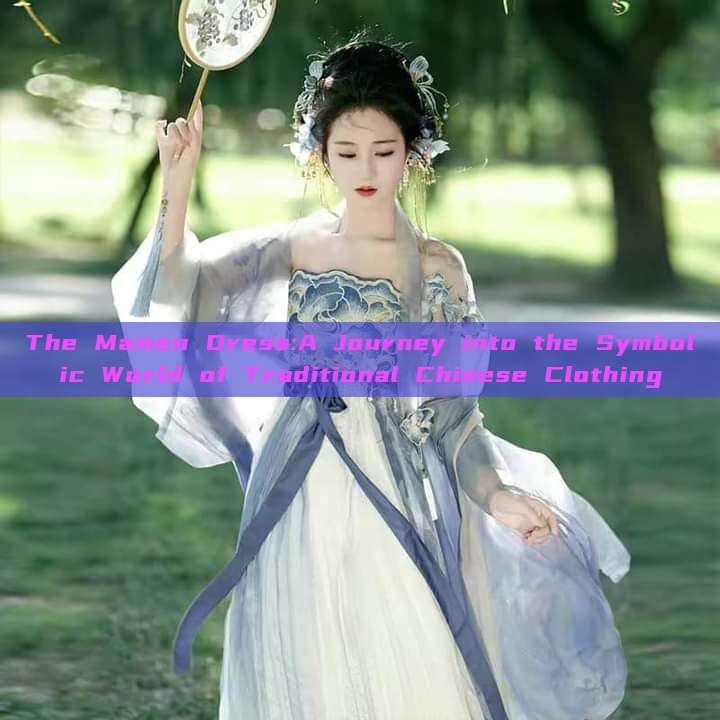
Originating in the Ming Dynasty (1368-1644), the mamen dress is a traditional women's garment that has a unique style and symbolism. It is characterized by its distinctive horseface-like pattern, which is often embroidered with intricate designs and vibrant colors. The design of the mamen dress reflects a blend of cultural influences, incorporating elements of both traditional Chinese aesthetics and the evolving fashion trends of the era.
The mamen dress is not only a piece of clothing; it is a symbol of status, culture, and tradition. It represents the rich history and craftsmanship of Chinese clothing, reflecting the skilled hands of generations of artisans. The intricate embroidery and vibrant colors of the mamen dress are a testament to the dedication and creativity of these artisans, who passed down their skills and knowledge through generations.
The mamen dress also holds significant cultural and social importance. It was traditionally worn by women during special occasions and festivals, serving as a symbol of their status and dignity. In modern times, the mamen dress has evolved to become a part of everyday fashion, worn by both traditional and modern women. It is a symbol of pride and heritage, representing the continuation of a rich cultural tradition.
The process of making a mamen dress is an intricate and time-consuming affair. The skilled artisans begin with selecting the finest quality of silk or other fabrics, which are then cut and shaped according to the traditional patterns. The intricate designs are then embroidered using various techniques, including threading, stitching, and beading. The use of vibrant colors and intricate patterns gives the mamen dress its unique and distinctive style.
The mamen dress has also witnessed changes and evolution over time. With the advent of modern fashion trends and globalization, the mamen dress has undergone several transformations. However, its core elements and symbolism remain unchanged, reflecting the resilience and adaptability of Chinese culture.
Today, the mamen dress is not only worn during festivals and special occasions but has also become a part of everyday fashion. It is worn by both traditional and modern women, who appreciate its beauty and symbolism. The mamen dress has also gained recognition worldwide, becoming a symbol of Chinese culture and heritage.
In conclusion, the mamen dress is a vibrant testament to the rich history and craftsmanship of traditional Chinese clothing. It represents a blend of cultural influences, incorporating traditional aesthetics with modern fashion trends. The mamen dress is not only a piece of clothing; it is a symbol of status, culture, and tradition, reflecting the skilled hands of generations of artisans. In modern times, it has evolved to become a part of everyday fashion, worn by both traditional and modern women, representing the continuation of a rich cultural tradition. As we celebrate the beauty and uniqueness of the mamen dress, we also celebrate the resilience and adaptability of Chinese culture. (1453 words)

 Previous Post
Previous Post

